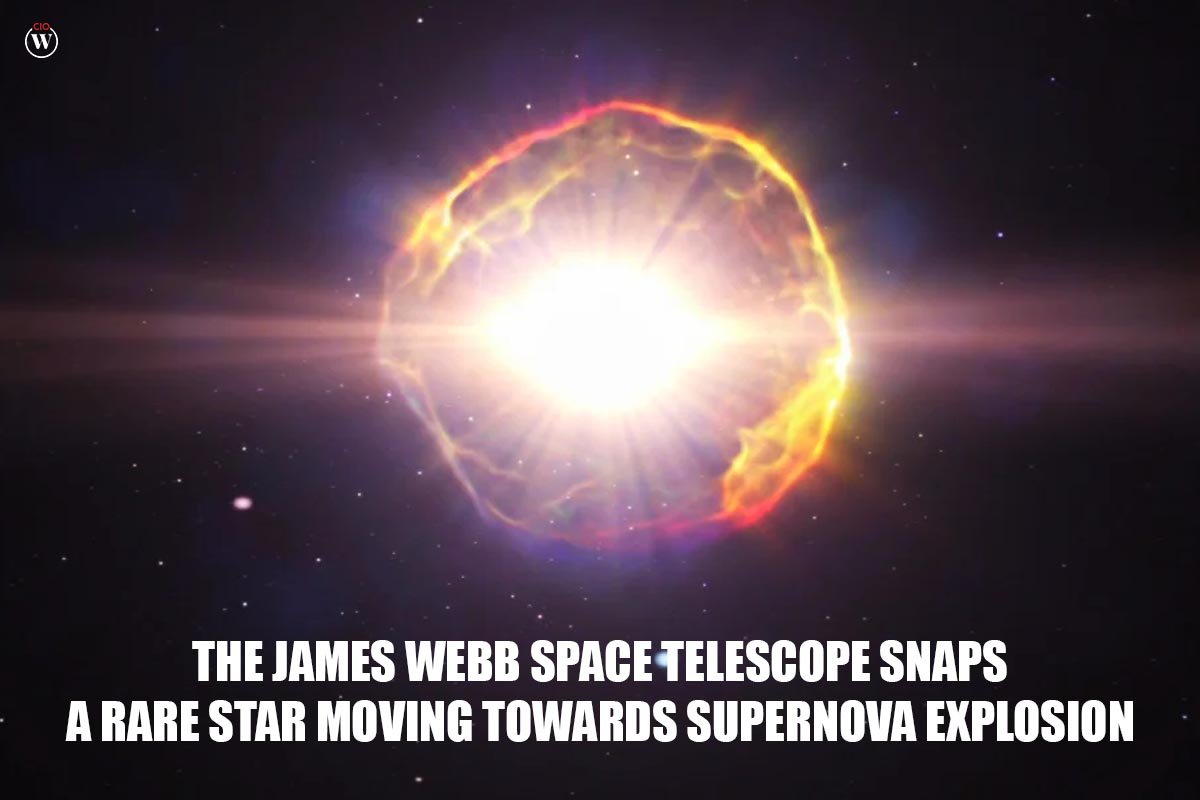The James Webb Space Telescope (JWST) has captured an incredible image of a star that is about to go supernova in a massive explosion. The star, known as WR 124, is in the middle of a spectacular cosmic cloud and is currently in the Wolf-Rayet (WR) phase, a rarely seen phenomenon in some stars’ life cycles.
Valuable to Astronomers
The star, which is about 30 times larger than the sun, is expelling its outer layers as it approaches its supernova event. So far, it has ejected more than 10 solar masses worth of material. The JWST’s detailed observations of this rare phase are valuable to astronomers as only some massive stars go through a brief Wolf-Rayet phase before going supernova.
The JWST’s photograph of WR 124, released by NASA on Tuesday, shows the star’s luminous halo captured in unprecedented detail. This is thanks to the James Webb Space Telescopes’ ability to detect the infrared glow of gas as it cools down to form cosmic dust.
The gigantic star resides 15,000 light-years away in the constellation Sagitta. The cloud surrounding the star could survive the supernova collapse and contribute to the universe’s “dust budget.” Dust is integral to the workings of the universe as it shelters forming stars, gathers together to help form planets, and serves as a platform for molecules to form and clump together, including the building blocks of life on Earth.
The universe currently contains more dust than astronomers can explain. “The universe is operating with a dust surplus budget,” NASA officials wrote in the image description. JWST observations like this one could shed light on the mysterious origin of all this dust.
Before the JWST, dust-loving astronomers did not have enough detailed information to explore questions of dust production in environments like WR 124. However, thanks to the James Webb Space Telescope capabilities, these questions can now be investigated with real data.
New image from James Webb Telescope shows star about to become supernova
Doomed to Explode in Kilonova
Astronomers have also discovered an early-warning system to watch supernova explosions as they unfold. A thick cocoon of circumstellar dust builds around stars in the last few months before they blow up, as seen in the image of WR 124. In the aftermath of a supernova event, all that is left of a star is a dense core, which can turn into a neutron star. Additionally, scientists have discovered a dead neutron star on a collision path with a massive star that they believe is doomed to explode in a fiery kilonova.
The JWST first snapped a photo of WR 124 in June 2022, just after it became operational. The James Webb Space Telescope’s abilities have allowed for detailed observations of a rare phase in some massive stars’ life cycles, providing valuable insights into the workings of the universe.
A Gold Mine of Data
Overall, the JWST’s photograph of WR 124 has provided astronomers with a wealth of data to investigate the mysterious origins of dust in the universe. With the James Webb Space Telescope’s advanced capabilities, scientists may be able to answer some of the long-standing questions about the formation and evolution of the cosmos.
Also read: Top 10 Biggest Telescopes in the World








